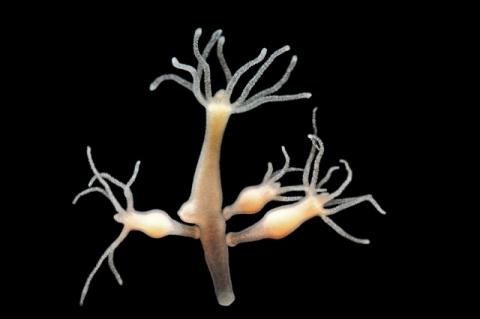
Hydra Can Genetically Modify Itself
The Hydra is an ancient serpentine marine monster, a fearsome beast in Greek mythology who grew two heads for each one removed by a valiant warrior.
Its real life equivalent, a freshwater polyp no longer than a centimeter (0.4 inches), is far less frightening but still quite remarkable – it is able to regenerate its entire body from any tiny fragment of itself.
A new study published in the Philosophical Transactions of the Royal Society has revealed that this little critter can actually modify its genetic coding to suit its needs, sending certain cells into overdrive in order to perform additional functions.
Hydra belong to a large grouping (phylum) of animals called the cnidarians, which also includes jellyfish, sea anemones and corals. Their distinguishing features are a set of cnidocytes, cells that are specialized for prey capture.
Hydra are particularly unusual, though, in that they do not seem to die. These ageless hunters spend much of their life motionless, moving rapidly only when their prey – mostly tiny plankton – wander past. When they do need to move, however, they do this by somersaulting, or “looping,” bending themselves over and using their tentacles to grip their prey or a surface.
